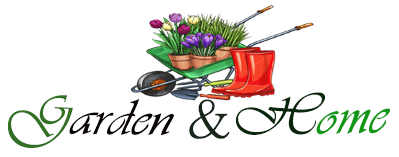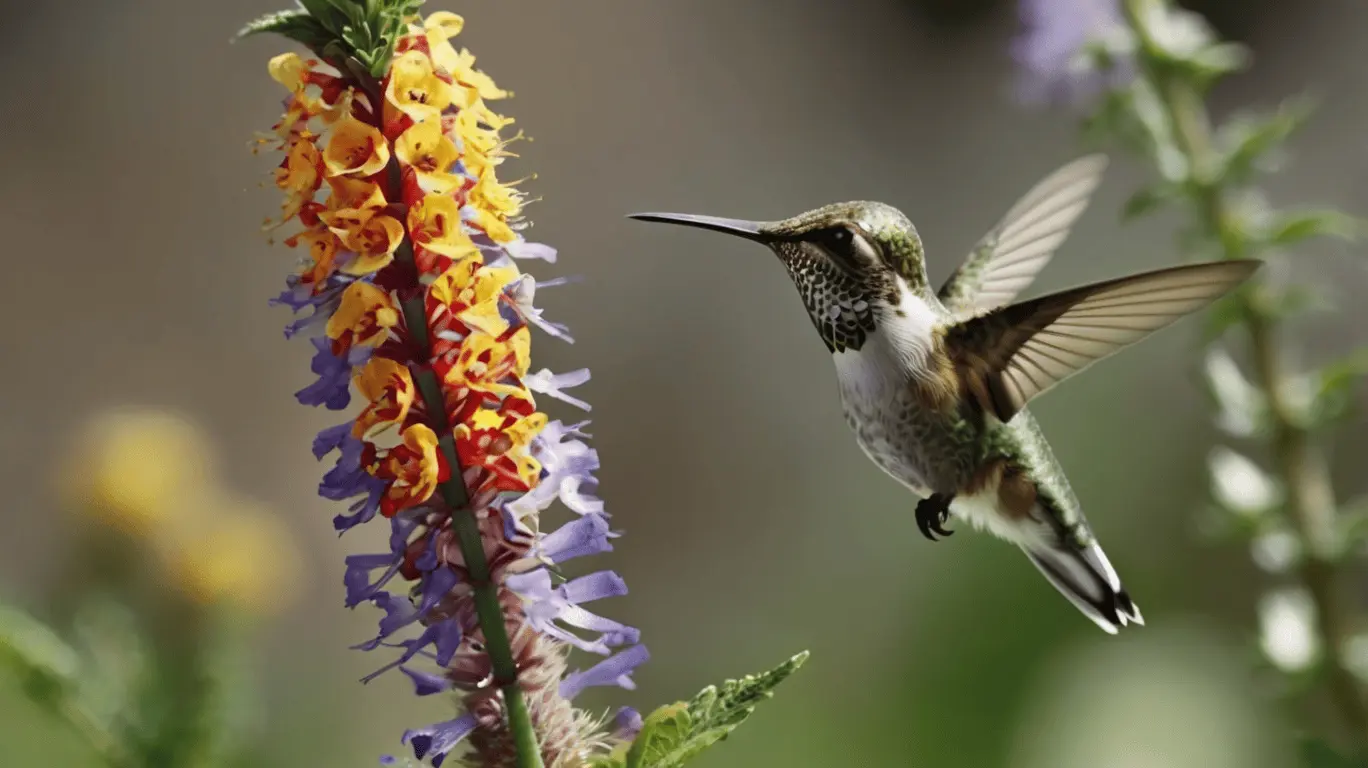Attracting hummingbirds to your garden not only enhances its beauty but also creates a vibrant, lively outdoor space where nature comes alive. These tiny birds are drawn to specific plants that provide them with nectar, color, and shelter. In this guide, we’ll explore the 10 best plants to attract hummingbirds to your yard, ensuring you create the perfect haven for these delightful creatures.
1. Salvia (Sage)
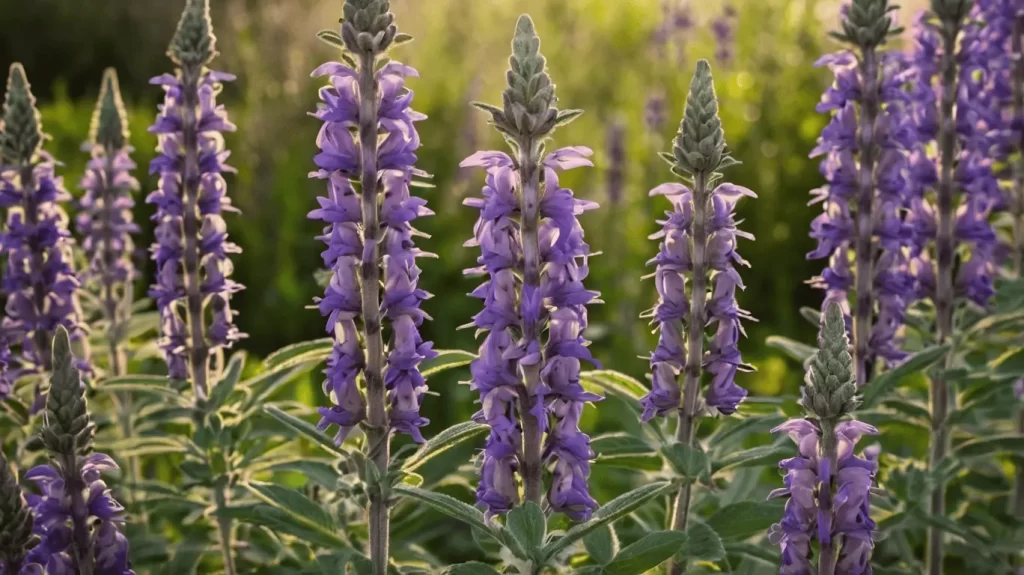
Salvia, or sage, is a must-have in any garden designed to attract hummingbirds. With its vibrant spikes of flowers in shades of red, blue, and purple, salvia produces an abundance of nectar that hummingbirds love. This hardy plant is drought-tolerant and thrives in full sun, making it both practical and visually stunning. Salvia blooms continuously throughout the summer, providing a consistent food source for hummingbirds over the season.
Why Hummingbirds Love Salvia:
- Tubular flowers ideal for long beaks.
- Rich nectar supply.
- Blooms that last for months, offering ongoing feeding opportunities.
2. Trumpet Vine (Campsis radicans)
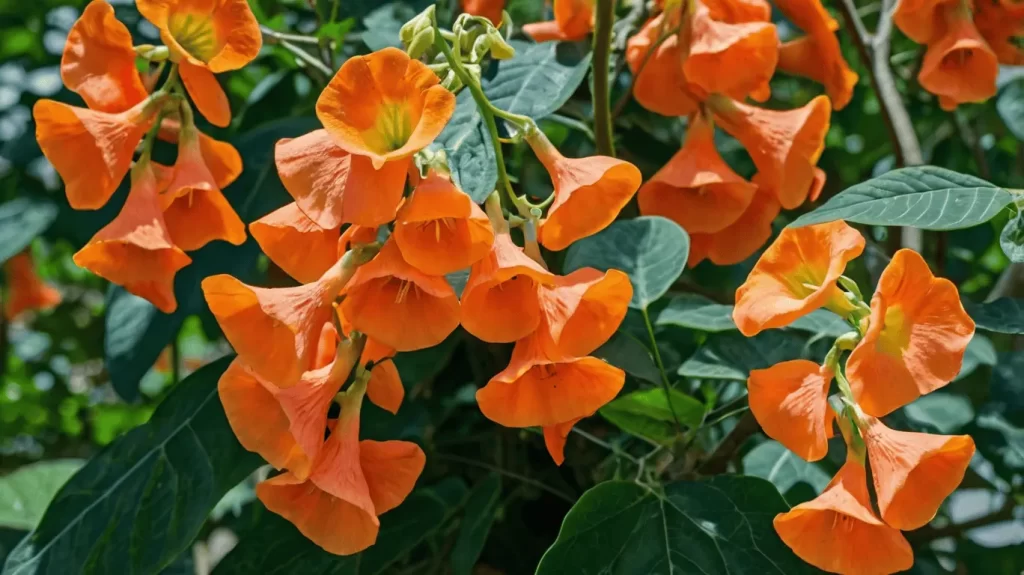
The trumpet vine is aptly named, as its large, trumpet-shaped flowers are a magnet for hummingbirds. This vigorous climbing plant produces fiery red, orange, or yellow blooms, making it a bold and dynamic addition to any garden. The vine grows quickly, so it’s perfect for covering fences, trellises, or arbors, providing not only nectar but also a natural habitat for nesting.
Why Hummingbirds Love Trumpet Vine:
- Abundant, tubular flowers packed with nectar.
- High visibility due to its bright color.
- Offers natural perches and shelter for birds.
3. Bee Balm (Monarda)
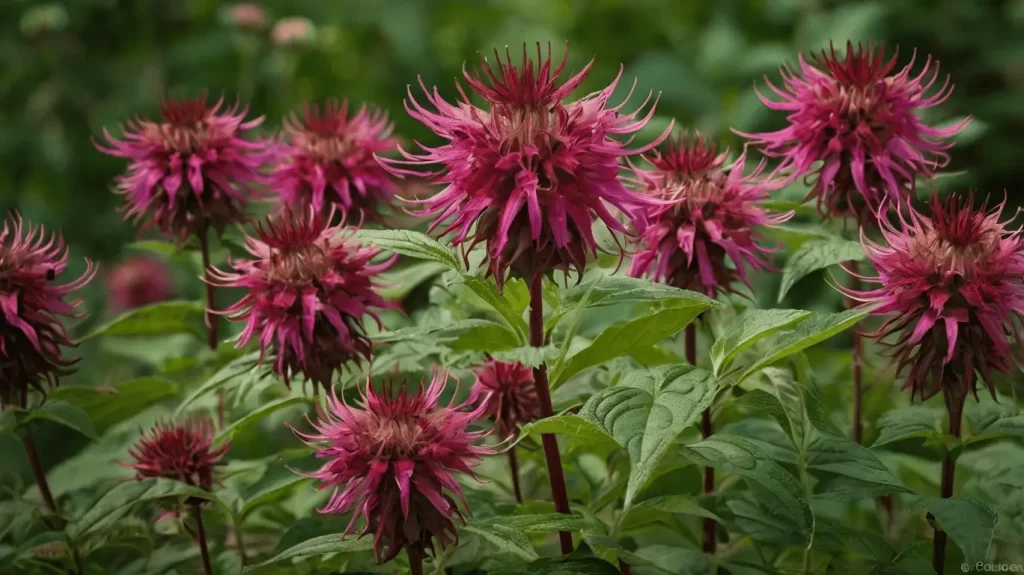
Bee balm is another nectar-rich plant that’s ideal for attracting hummingbirds. Its dense clusters of flowers come in shades of red, pink, purple, and white, all of which are irresistible to these little birds. In addition to hummingbirds, bee balm also draws butterflies and bees, making it a pollinator-friendly choice for your garden. This perennial blooms from mid-summer to early fall, extending the nectar supply well into the late season.
Why Hummingbirds Love Bee Balm:
- Vibrant colors that attract hummingbirds from afar.
- Flowers that are easy for them to feed from.
- Blooms throughout the summer, ensuring a steady nectar supply.
4. Fuchsia
Fuchsias are known for their eye-catching, pendulous flowers that hang like delicate lanterns. These flowers are rich in nectar and available in a variety of colors, including red, purple, pink, and white. Fuchsia plants do well in containers, hanging baskets, and shaded areas of your garden. Their unique blooms and placement make them an excellent choice for attracting hummingbirds to all parts of your outdoor space.
Why Hummingbirds Love Fuchsia:
- Profuse blooms with deep reserves of nectar.
- Hanging flowers allow easy access for hummingbirds.
- Continuous blooms that last throughout the growing season.
5. Coral Honeysuckle (Lonicera sempervirens)
Coral honeysuckle is a twining vine with tubular flowers in shades of red and orange, making it a favorite among hummingbirds. This plant is low-maintenance and can grow in a variety of climates, providing an excellent source of nectar throughout spring and summer. Plant coral honeysuckle near fences, trellises, or walls to give hummingbirds easy access to its blooms.
Why Hummingbirds Love Coral Honeysuckle:
- Long, tubular flowers suited to their feeding style.
- A high nectar content.
- Long blooming periods, especially when regularly deadheaded.
6. Cardinal Flower (Lobelia cardinalis)
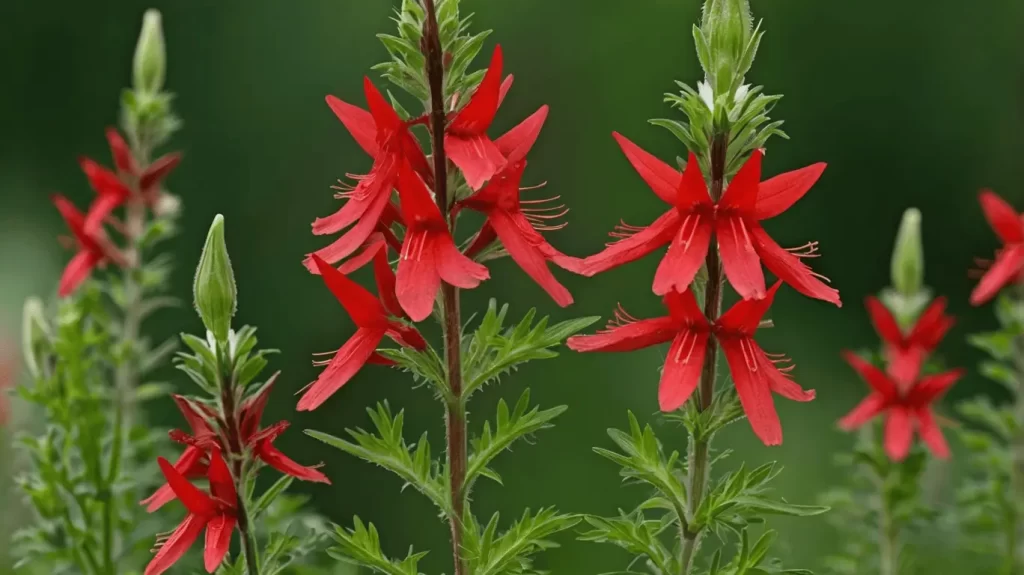
The cardinal flower produces striking red blooms that stand out in any garden. Known for its towering spikes of flowers, this plant thrives in wet or boggy areas, making it perfect for planting near water features or in moist garden beds. The cardinal flower blooms from mid-summer to fall, ensuring that hummingbirds have a late-season nectar source.
Why Hummingbirds Love Cardinal Flower:
- Vivid red blooms attract hummingbirds naturally.
- Tall spikes provide an ideal feeding structure.
- Flowers that bloom during the late season, when nectar is scarce.
7. Red Hot Poker (Kniphofia)
Also called torch lilies, red hot pokers produce tall, fiery spikes of red, orange, and yellow flowers that resemble torches. These dramatic plants are hardy and drought-tolerant, thriving in full sun. Their high nectar content and bold colors make them a perfect choice for hummingbird enthusiasts.
Why Hummingbirds Love Red Hot Poker:
- Tall spikes and tubular flowers loaded with nectar.
- A visually prominent plant that catches the eye.
- Blooms that attract hummingbirds throughout the summer and fall.
8. Butterfly Bush (Buddleia davidii)
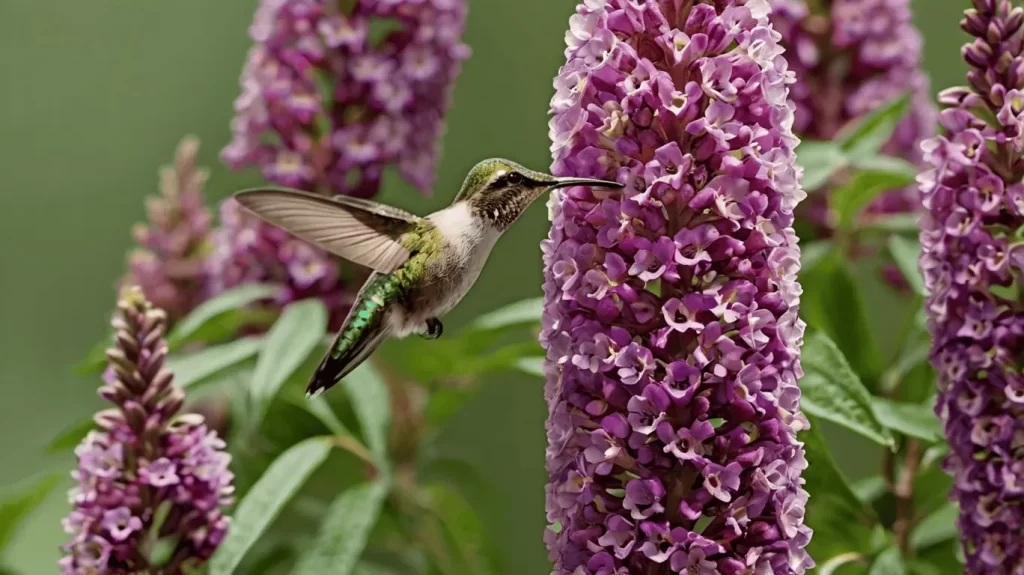
Despite its name, the butterfly bush is just as attractive to hummingbirds as it is to butterflies. Its long clusters of flowers in shades of purple, pink, and white are rich in nectar, providing plenty of food for hummingbirds. Butterfly bushes bloom from summer into fall, making them a vital nectar source as the season winds down.
Why Hummingbirds Love Butterfly Bush:
- Large, nectar-filled blooms.
- Extended blooming period ensures a steady nectar supply.
- Multiple colors appeal to different pollinators, including hummingbirds.
9. Petunias
Petunias are a versatile and easy-to-grow annual that attracts hummingbirds with its trumpet-shaped flowers. Available in almost every color imaginable, petunias are perfect for adding bursts of color to garden beds, containers, and hanging baskets. They are low-maintenance and bloom profusely throughout the summer, giving hummingbirds plenty of feeding opportunities.
Why Hummingbirds Love Petunias:
- Nectar-rich, trumpet-shaped flowers.
- Easy access to nectar due to the flower’s open structure.
- Available in a wide range of colors to attract hummingbirds.
10. Columbine (Aquilegia)
Columbine is a delicate-looking plant that produces spurred flowers in shades of red, yellow, purple, and blue. These intricate blooms are rich in nectar and bloom in the spring, providing an early-season food source for hummingbirds. Columbine thrives in shaded areas and is a great way to draw hummingbirds into parts of your garden that may not receive full sun.
Why Hummingbirds Love Columbine:
- Uniquely shaped flowers designed for hummingbirds.
- Early blooming provides food when few other flowers are available.
- Multiple color varieties offer a rich visual appeal.
Conclusion
By incorporating these 10 plants into your garden, you can create a hummingbird-friendly environment that provides both nectar and shelter for these fascinating creatures. Whether you have a small yard or a sprawling garden, these plants offer the perfect combination of beauty and functionality. Remember, planting a variety of species that bloom at different times of the year will ensure a continuous food source for hummingbirds, keeping them coming back to your yard season after season.
